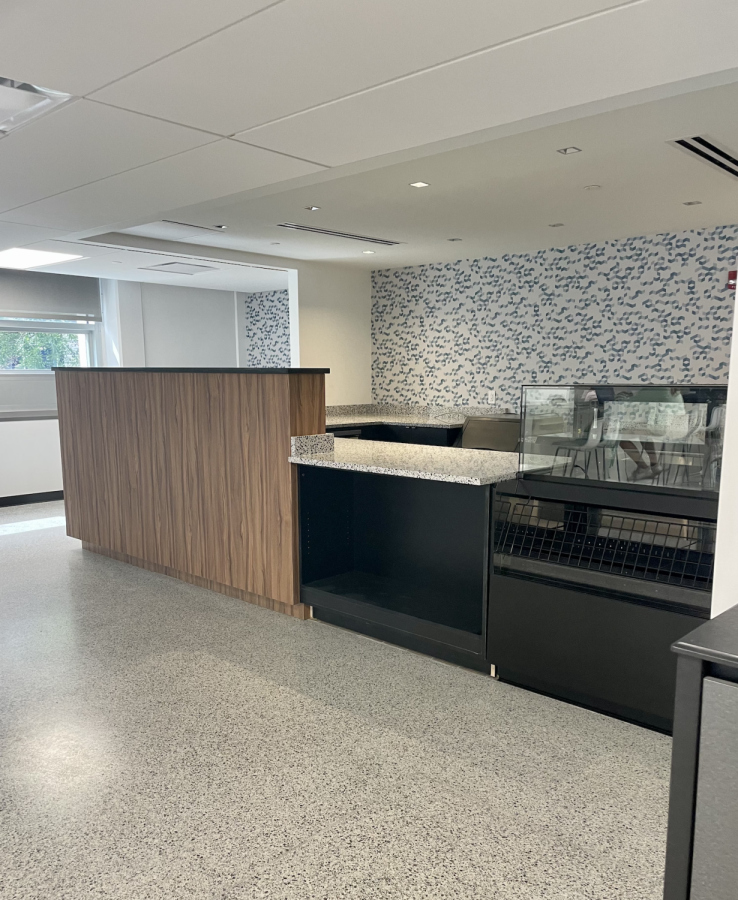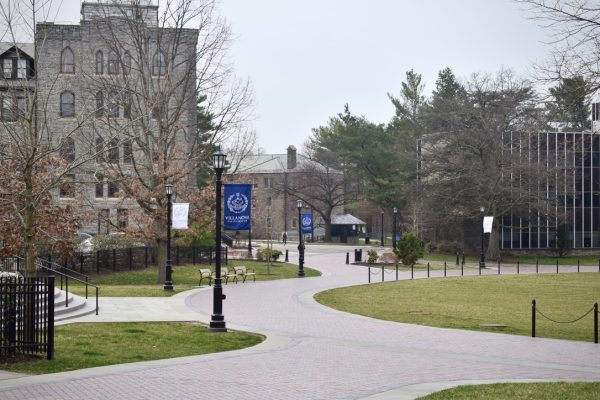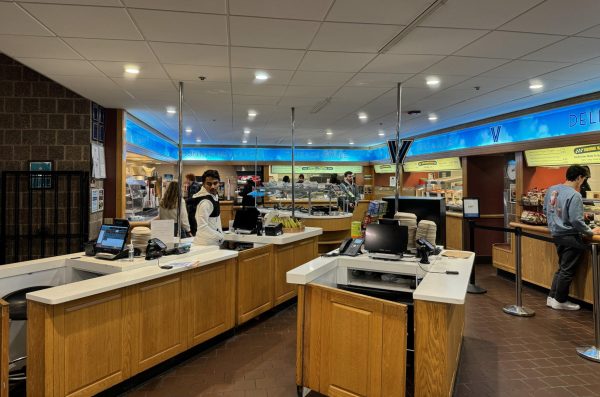Villanova Needs More Renovations to Beautify Campus
Victoria Margnenat / The Villanovan
The new Holy Grounds location at Mendel Hall is one of many renovations this fall.
September 14, 2022
The vast disparity in facilities and appearances that has long befallen the buildings on Villanova’s campus is no secret. Be it a quick scroll through YikYak or an offhand remark made while struggling to class in Tolentine, within one’s first few weeks on campus, it becomes blatantly obvious why Bartley Hall and the Saint Thomas of Villanova Church find themselves at home in promotional material and campus tours, while other buildings are less prominent, if not absent altogether.
The leap from Bartley’s plush lounges and frequently renovated flooring to the 80s-esque bathrooms of White Hall — cramped, damp and ever permeated by an odd smell — is a large one. This past summer, Mendel Hall, home to STEM-centered classes, received a Holy Grounds while Bartley, unsurprisingly, had its flooring redone and study area redesigned. In the meantime, the narrow corridors of SAC and dilapidated restrooms in Tolentine continue to deteriorate at a seemingly exponential rate. With my extensive architectural knowledge (Minecraft and Sims), I have outlined proposed improvements to our campus as a means of remedying the aforementioned gap in renovations.
First, Tolentine could use an exhaustive internal purge. The exterior presents a towering building reminiscent of Hogwarts, but enter its halls, and the steep, unforgiving stairs, and lack of available restrooms pose damaging implications in regards to accessibility. That there is one single-stall bathroom available on the majority of Tolentine’s floors impedes learning and comfort for students, many of whom bemoan having to wait more than 10 minutes at a time for the chance to use the restroom.
“Tolentine bathrooms are inconvenient to access as they often have long lines outside of them,” sophomore Michelle Kang said. “Please add more. It’s such an annoyance.”
Beyond serving as an annoyance, Tolentine’s steep staircases further deter those with disabilities from being able to access their classrooms. As an orientation counselor, I had a father show up to our parent meeting 10 minutes late, panting, as he had to scale three flights of stairs on a broken foot because he was unable to use the elevator. For students, missing out on class time waiting for elevator access, or having to forgo the elevator to attempt the stairs is an unnecessary struggle that could easily be resolved with increased accessibility. Beyond appearances, adding more bathrooms in Tolentine and making its elevator more readily available to students could greatly improve the educational experience for many Villanova students.
White Hall, only steps away from Tolentine, harbors many of the same issues as its neighbor. The classrooms are designed in such a manner that the air conditioning being turned on manages to completely overpower conversation and dampen any ongoing lecture. The floorplan is convoluted and bizarre. The bathrooms of White Hall, equally odd, feature an eerie waiting room, fit with questionable seating alongside the most cramped stall and sink design to grace Villanova’s campus.
A further blemish on Villanova’s campus emerges in the tunnels that lead to West Campus. They are too susceptible to flooding, so winter and rainy periods make for treacherous conditions when students must sidestep ice and puddles on their trek to class. The tunnel’s steps are similarly dangerous, with the sight of a student slipping down its stairs in the winter months not being an anomaly. Nor is it surprising to observe scattered cans, vomit and other miscellaneous items littered throughout the tunnel when returning to classes following the weekend. Installing flood protection within these tunnels could make the journey across campus infinitely more bearable and safe for students.
As Villanova continues to tackle renovations on campus, taking accessibility and safety into consideration would alleviate the litany of complaints accompanying many of its more neglected buildings.








